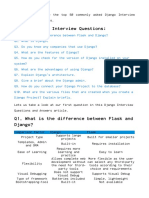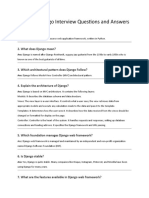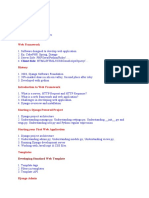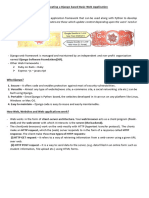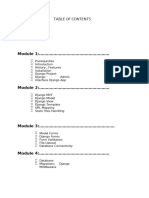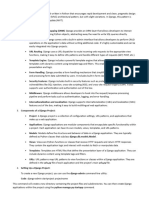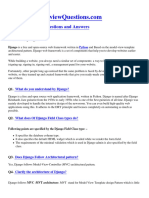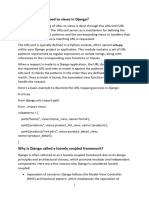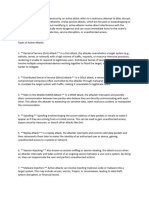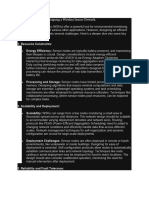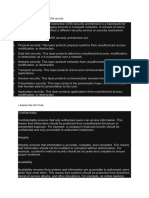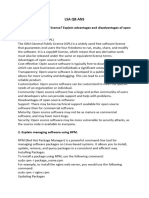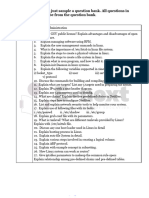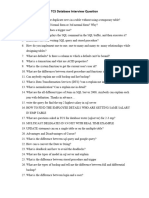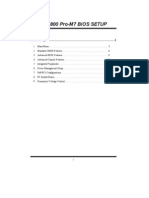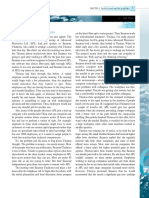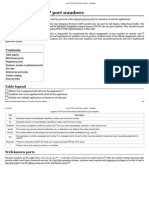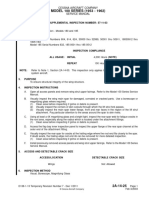0% found this document useful (0 votes)
38 views5 pagesDjango Questions Interview
Django is a high-level Python web framework that follows the MVC architectural pattern, offering rapid development, scalability, and built-in security features. Key concepts include models for data structure, views for application logic, URL patterns for routing, and templates for dynamic HTML generation. The framework also supports features like middleware, authentication, and RESTful API development through the Django REST framework.
Uploaded by
Gaurav bansodeCopyright
© © All Rights Reserved
We take content rights seriously. If you suspect this is your content, claim it here.
Available Formats
Download as PDF, TXT or read online on Scribd
0% found this document useful (0 votes)
38 views5 pagesDjango Questions Interview
Django is a high-level Python web framework that follows the MVC architectural pattern, offering rapid development, scalability, and built-in security features. Key concepts include models for data structure, views for application logic, URL patterns for routing, and templates for dynamic HTML generation. The framework also supports features like middleware, authentication, and RESTful API development through the Django REST framework.
Uploaded by
Gaurav bansodeCopyright
© © All Rights Reserved
We take content rights seriously. If you suspect this is your content, claim it here.
Available Formats
Download as PDF, TXT or read online on Scribd
/ 5






